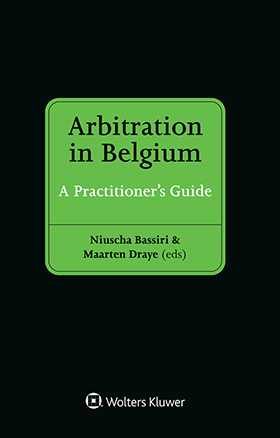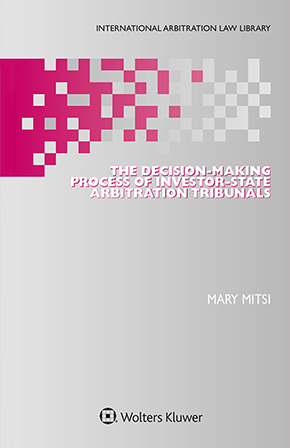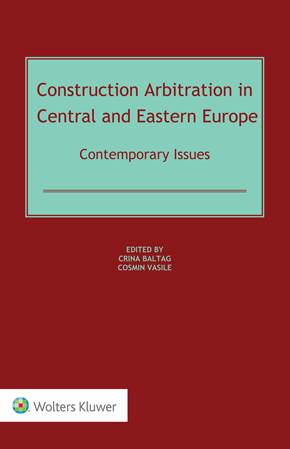Gracious Timothy Dunna and Juhi Gupta
What is the meaning of “existence”? While theologians and philosophers continue to debate this endlessly, this metaphysical question has also concerned Indian arbitration law, specifically Section 11(6A) of the Arbitration & Conciliation Act, 1996 (“Act”). It was thought that the scope of a court’s intervention when appointing an arbitrator was solidified via the 2015 Amendment to the Act; however, Indian courts have actively engaged with the question of “existence” in their recent encounters with Section 11(6A), which provides:
“[The court] … shall, notwithstanding any judgment… confine to the examination of the existence of an arbitration agreement.” (emphasis added)
This provision and its judicial interpretation necessarily intertwine with fundamental arbitration tenets of minimal judicial intervention and kompetenz kompetenz, enshrined in Sections 5 and 16, as well as the doctrine of severability.
Prior to the 2015 Amendment, the position of law was that courts had a wide scope of authority while deciding a petition under Section 11 to appoint an arbitrator, which included considering issues of existence, duration, and validity of a live claim (see SBP and Boghara). Since the court’s decision assumed finality on matters referred to it under Section 11(7), these issues had to be decided either on the basis of affidavits and documents produced by parties or the court had to take such evidence on record. Therefore, it was possible that parties could find themselves in a full-blown trial at the very threshold of the arbitral process.
It was the 246th Law Commission Report that recommended the introduction of Section 11(6A) on account of the complications created by SBP and Boghara. Notably, the Law Commission recommended the insertion of an explanation to the provision, which provided that the court must refer parties to arbitration once it is prima facie satisfied that an arbitration agreement exists, leaving final determination of validity of the arbitration agreement to the arbitrator. If the court concluded that the arbitration agreement does not exist and that it is null and void, the conclusion will be final and not prima facie, including the determination as to whether the agreement is null and void. Although the explanation arguably holds the key to understanding the import of “existence” in Section 11(6A), inexplicably, it did not find its way into the provision as enacted.
In 2017, the Supreme Court (“SC”), in Duro Felguera (“Duro”), acknowledged that the 2015 Amendment changed the position from the wide scope under Section 11 and that “after the amendment, all that the Courts need to see is whether an arbitration agreement exists – nothing more, nothing less.” Here, an original tender was consciously split into separate contracts, each containing a separate arbitration clause. The SC noted that parties could not go back to the original tender since now there were separate letters of award, separate subject matters, and separate works; thus, there couldn’t be a single tribunal. The SC not only determined the factum of existence but also the scope of the arbitration clause in the original tender vis-à-vis the separate contracts. It held that for a finding on existence, “it needs to be seen if the contract contains a clause which provides for arbitration pertaining to the disputes which have arisen between the parties to the agreement.” The existence of the arbitration agreement was held in the negative.
Thereafter, in United India Insurance (“United India”) the SC declined to appoint an arbitrator since a pre-condition to invoking the arbitration clause had not been satisfied, which was an admission of liability by insurer. The question was whether the denial of liability fell in the excepted category on account of a communication from the insurer to the insured. The SC held that it did, “thereby making the arbitration clause ineffective and incapable of being enforced, if not non-existent.” There could have been no arbitration if the insurer did not admit liability, which was the precondition to arbitration.
United India is viewed by many, at least academically, as having overruled Duro. However, in our opinion, it can be distinguished from Duro on facts. In United India, the SC labelled the exposition in Duro as a “general observation,” which was not binding in the specific context of United India. Rather, United India actually seems to have followed the dictum in Duro that “it needs to be seen if the contract contains a clause which provides for arbitration pertaining to the disputes which have arisen…” This dictum was certainly the basis of the Delhi High Court’s decision in Brightstar Telecommunications, where the issue was again the scope of the arbitration agreement: “[W]hether the arbitration mechanism agreed to by the parties is relatable to the disputes arising out of the transactions, which are the subject matter of the parent contract. In other words, the Court has to relate the existence of arbitration agreement to the disputes, which the parties had anticipated that would arise in connection with and/or in relation to the transactions that they had undertaken.” Here, the Court held that the product in question was excluded from the purview of the contract and, therefore, the arbitration agreement. It observed that if the court were to accept the absence of that product as a typographical error, as argued by the Applicant, it would require taking a leap of faith without any document placed on record. Thus, there was no doubt about the product falling outside the scope of the arbitration agreement.
Interestingly, in NCC Ltd., the Delhi High Court expressly added additional layers to the “existence” test under Section 11(6A) stating that the “space for correlating the dispute at hand with the arbitration agreement is very narrow” and “except for an open and shut case… the matter would have to be resolved by an Arbitral Tribunal.” Thus, where parties contested the scope of the arbitration agreement, the matter would have to be left for resolution by the tribunal, which was the scenario in NCC Ltd.
The most recent decision in the saga came from the SC in Garware, where it amplified Duro and United India. The SC heavily relied on its 2011 decision in SMS Tea (“SMS”) to hold that an arbitration clause contained within an unstamped and unregistered agreement was automatically rendered inadmissible and unenforceable (except unregistered agreements, which are admissible and enforceable for limited purposes). As per the Court, SMS could not be construed as having been specifically excluded by the import of “notwithstanding any judgment” in Section 11(6A) because SMS only gave effect to provisions of a mandatory enactment and neither the 246th Law Commission Report nor the Statement of Object and Reasons of the 2015 Amendment indicated its exclusion. However, the SC concluded that the phrase specifically excluded SBP and Boghara.
Another angle in Garware was that if an unstamped and unregistered agreement was rendered unenforceable by mandatory legislation, it could not be considered a “contract” due to its unenforceability as per Section 2(h) of the Indian Contract Act, 1872, and since Section 7(2) of the Act speaks of an arbitration clause “in a contract,” an arbitration clause in an agreement would not exist if the said agreement was unenforceable. Note here that Garware’s interpretation of “existence” includes the question of whether the arbitration agreement is null and void, a threshold standard that was initially recommended by the Law Commission but did not feature in the 2015 Amendment.
While it is beyond the ambit of this post, an interesting question about Garware is whether the SC correctly applied the doctrine of severability of an arbitration agreement (see Enercon)? In this context, readers are encouraged to read the Bombay High Court’s decision in Gautam Landscapes, which involved the same factual scenario as Garware. The Bombay High Court applied the doctrine in the traditional fashion to hold that the arbitration clause is separate from the main agreement within which it was contained and, therefore, unconcerned with the non-stamping of the main agreement. Garware overruled this decision.
Finally, it important to discuss the decision of the SC in Vidya Drolia (“Vidya”), which was decided prior to Garware. It clarified what existence did not mean: the “validity of an arbitration agreement is… apart from its existence.” As for the court’s jurisdiction to determine subject-matter arbitrability under Section 11(6A), the SC opined that this had to be decided by a larger bench. However, going by the rationale in Garware about the need to have an enforceable agreement, it will not be surprising if the larger bench brings subject-matter arbitrability within the purview of the “existence” enquiry as a threshold standard.
Considering the above decisions, the issue boils down to whether the “existence” inquiry under Section 11(6A) should only encompass a mechanical finding of the factum of an arbitration agreement, or should it even extend to issues of scope, applying a narrow standard, and threshold issues of enforceability? We delve into this in Part II.
More from our authors:

|
Arbitration in Belgium: A Practitioner’s Guide by Edited by Niuscha Bassiri, Maarten Draye € 185 |

